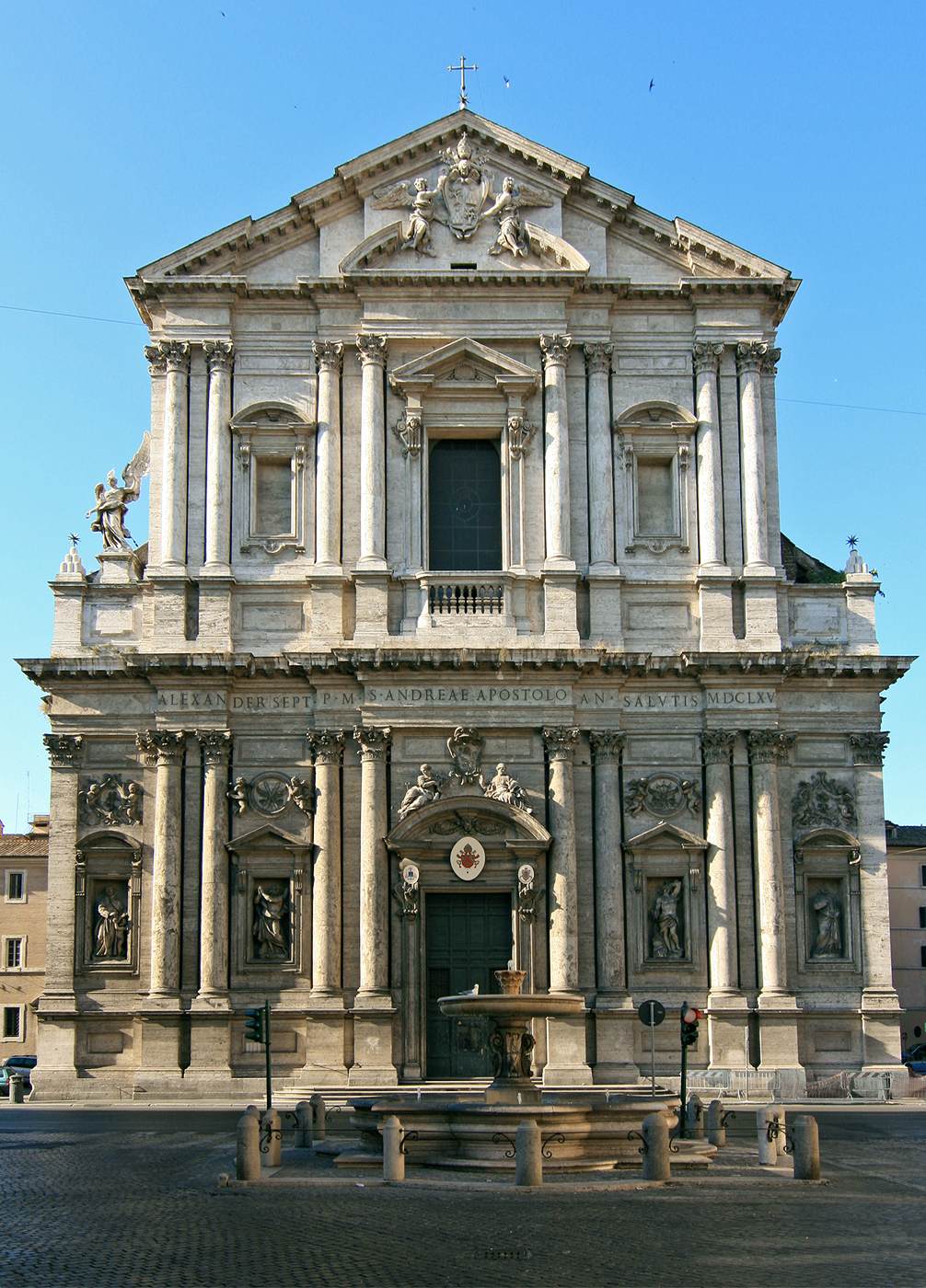Italian architect, part of a family of artists, son of Girolamo Rainaldi. He received his architectural training from his father, with whom he also began his first important work, the church of Sant'Agnese in Agone (1652-53), next to his father's Palazzo Pamphilj, for Innocent X. The church was subsequently modified by Francesco Borromini in 1653-57 and completed by Carlo in 1657-66.
From 1661 to 1665 Rainaldi worked on the completion of the façade of Sant'Andrea della Valle, begun in 1624-29 to a design by Carlo Maderno. In its final form it represents Rainaldi's transformation of the original scheme into a High Baroque aedicular façade, modified in its turn in a more classical direction, probably by Carlo Fontana, who assisted Rainaldi in 1661-62.
Rainaldi's inventive design for Santa Maria in Campitelli (1659-67), his most important work, was free from the influences of his father or any collaborators. The church was built in honour of an image of the Virgin that offered protection during an outbreak of plague.
In 1660 Rainaldi was asked to submit a design in competition for the Spanish Steps, Rome; together with Bernini and Pietro da Cortona, he also submitted drawings (Musée du Louvre, Paris) for the east façade of the Louvre, Paris, at the request of Louis XIV, but none of these schemes was executed.
Another project of Rainaldi's had considerable urban-planning significance: the twin churches of Santa Maria in Montesanto and Santa Maria dei Miracoli planned for the important entry to Rome, the Piazza del Popolo. They were commissioned in 1661 but completed only in the late 1670s for Alexander VII. The pair represented a striking departure from his earlier architectural style, partly the result of Bernini's involvement as architect of the Montesanto and his redesign of the porticos after 1673.
A similar severity of design is found in Rainaldi's façade for the Roman church of Gesù e Maria (1671-74). Its flatness is appropriate for the narrow Via del Corso, on to which it fronts, and serves as a foil to the sumptuous interior, also designed by Rainaldi, as was the high altar and two western chapels. He was also influenced here by Bernini in his consistent reliance on pilasters for church façades.
Rainaldi's other projects included the Spada Chapel in Santa Maria in Vallicella, the high altar for San Girolamo della Carità, and the tabernacle for the main altar of Santa Maria della Scala (designed c. 1647). In 1662-69 he built Santa Maria del Suffragio, where he flanked the longitudinal nave with side chapels and designed the central altar. Rainaldi also worked for the Mancini family in Rome, notably on the Palazzo Mancini (1660 and c. 1689). In the baptistery of San Giovanni in Laterano (San Giovanni in Fonte) he restored the chapel of San Venantius after 1672 and designed the altar and flanking tombs for the Ceva family. He also designed the high altar of San Lorenzo in Lucina in 1676 for Guido Reni's Crucifixion. From 1674 to 1676 he was in charge of the choir and transepts at Sant'Antonio dei Portoghesi.
A particular tribute to Rainaldi's versatility was the imposing monument to Pope Clement IX (1671) in Santa Maria Maggiore. This was executed to Rainaldi's composition with the papal figure carved by Domenico Guidi.
In his best work, as exemplified by Santa Maria in Campitelli, Carlo Rainaldi succeeded in exploiting a conflict of axialities on plan, the manipulation of light sources and the use of free-standing columns to achieve scenic effects that unite Mannerist planning and High Baroque detail in a unique and powerful combination.
//
![]()









